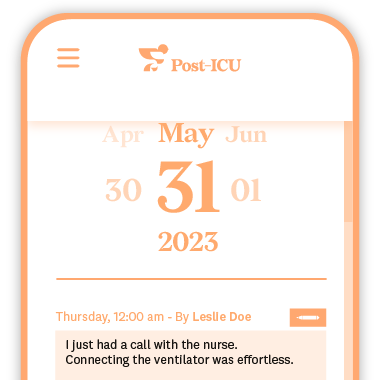Inefficient processes, staffing shortages, accessibility issues, and high costs—many health systems around the world, including the US health system, can be described this way. However, innovative digital solutions have proven to be an effective response to these challenges and represent the future of healthcare.
Traditionally, medicine, and consequently healthcare systems, are very conservative and skeptical of innovation. These characteristics are necessary to ensure that innovative solutions are held to high standards. They must deliver on their promises, benefit people, and minimize risks. We’ve seen many digital solutions successfully integrated into the existing health systems. Let’s explore what benefits these integrations might have.
Benefits of Digital Solutions for Hospitals
Involving Patients in Their Care
Higher engagement of patients in their care has been shown to improve outcomes. Shared decision-making leads to better treatment adherence, which results in better outcomes. Participating in the creation of their care plans while feeling understood and supported also leads to higher satisfaction. Digital health technologies can play an important role here. Telemedicine and various mobile health applications easily connect patients to doctors and improve access to care. 1Marzban, S., Najafi, M., Agolli, A., & Ashrafi, E. (2022). Impact of patient engagement on healthcare quality: a scoping review. Journal of patient experience, 9, 23743735221125439. 2Birkeland, S., Bismark, M., Barry, M. J., & Möller, S. (2022). Is greater patient involvement associated with higher satisfaction? Experimental evidence from a vignette survey. BMJ quality & safety, 31(2), 86-93.
Improving Efficiency and Reducing Costs
The integration of digital health solutions can streamline operations in various ways:
- Telemedicine reduces the need for in-person visits, so more patients can get access to care, the same resources can be used to see more patients, and there’s less strain on physical facilities
- Electronic health records are a way to easily store, retrieve, update, and share patient information, reducing admin work and paperwork
- Remote monitoring allows for early detection of exacerbations reducing the need for emergency interventions
- AI and Machine Learning can help organize, manage, and process data, helping in diagnosis and treatment planning.
Digital solutions help do more with the same resources while reducing operational costs and increasing productivity.
Facilitating Data-Driven Decision Making
The collection, management, maintenance, analysis, and sharing of data is greatly enhanced by digital technologies, transforming how healthcare systems operate. High-quality, well-organized data not only facilitates research and process improvement but also leads to more efficient patient care. On an individual level, this data empowers both patients and healthcare providers to make informed decisions, enabling the creation of personalized, data-driven care plans tailored to each patient’s unique needs.
Increasing Access to Healthcare Services
Digital solutions are crucial for providing equally accessible care to diverse communities. People should be able to get care regardless of their race, gender, age, economic and educational background. Care should also be made more accessible to people with chronic illnesses or disabilities, as well as those living in rural, underserved communities. The nature of digital technology allows for these improvements. Patients not needing to be physically present for all their appointments increase access to providers, making it easier to get care when necessary.
Strengthening the Bottom Line
Studies indicate a strong correlation between a hospital’s digital maturity and its profitability.3Vogel, J., Hollenbach, J., Haering, A., Augurzky, B., & Geissler, A. (2024). The association of hospital profitability and digital maturity–An explorative study using data from the German DigitalRadar project. Health Policy, 142, 105012. While digital solutions require a monetary investment, they lead to enhanced operational efficiency and better patient outcomes which results in improved financial performance.
Challenges of Implementing Digital Solutions
With all the benefits of innovative digital solutions, come several adoption and implementation challenges:
- Data privacy and security: sensitive patient data are a frequent target of cyber attacks and the costs associated with rectifying these attacks averaged $1.27 million per incident.
To reduce the risks, digital solution developers are using data encryption, cloud security solutions, doing regular security audits, and addressing internal threats. Limiting access to sensitive information is also crucial so digital solutions should have these safeguards in place. - A gap in technological skills among healthcare providers: digital tools can only be effective and provide maximum benefit if they are used appropriately. Ensuring that the tools are user-friendly, and proper training can bridge this gap
- Interoperability: different digital systems need to work together well to ensure high-quality data and effective care. The interoperability is ensured through understanding and implementing technical standards, data exchange protocols, and organizational policies.
The Ultimate Goal: Patient-Centered Care
One of the primary goals for many healthcare systems is to make care more patient-centered. This involves enhancing communication, improving access to care, developing personalized care plans, making data-driven decisions, and increasing patient satisfaction. Additionally, it focuses on improving the overall patient experience through effective education and support. Implementing patient-centered care requires significant resources, and in the 21st century, it is nearly impossible to achieve without adopting innovative digital solutions.
The Post-ICU Digital Diary: ICU Innovation
The shift to patient- and family-centered care is also happening in critical care settings. In the ICU, the primary focus remains on preserving patients’ lives. However, recent studies have shown the impact of ICU stays on psychological and cognitive health. As a result, efforts have been made to support patients in their recovery and help them regain their quality of life after their ICU stay.
One effective tool in this process is the ICU diary. Through journaling, families and providers create a shared narrative that helps both patients and their families cope with the trauma of the ICU experience. This narrative helps patients in piecing together their time in the ICU and regain a sense of control over their lives.
This tool is now available in digital form as The Post-ICU Digital Diary. It can bring all these benefits to your ICU.
- More data for hospitals to improve patient experience and increase satisfaction
- Used as a communication channel between families and nurses, reducing the number of calls nurses get daily from various family members
- Integrates well with ICU workflows
- Improves efficiency by allowing nurses to focus on patient care
- Increases family engagement which improves patient outcomes
All these features benefit hospitals and indirectly influence the bottom line as well. Contact our team to learn more.





